Some optical illusions aren’t for the faint for heart, to understand the world around us our brains have developed incredible coping mechanisms and tactics.
Crazy optical illusions help challenge our brains into seeing something that actually isn’t there, in this list you’ll see an array of images and gifs which show you how you’re brain in deceiving you – makes you wonder how our experiences are heavily distorted in order to process and receive information.
These squares are actually the same exact color. Hold your finger over the boundary between the two shapes and see them change.
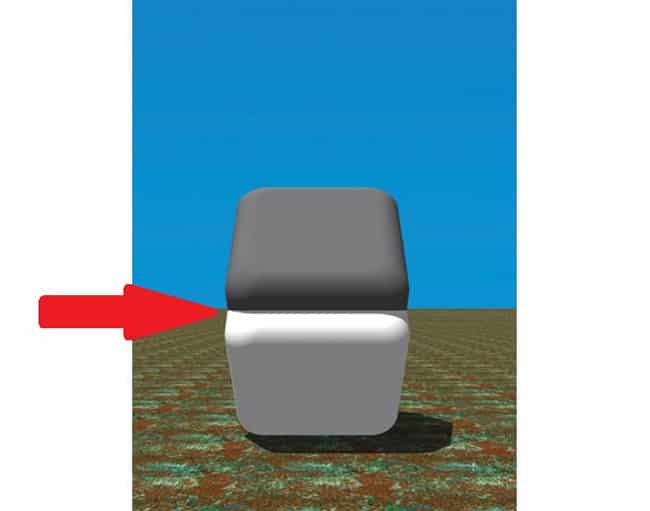
The Cornsweet illusion exploits the brain’s lateral inhibition, which creates more contrast between the two objects when they have different colored edges.
Cross your eyes and you should be able to see a familiar face.
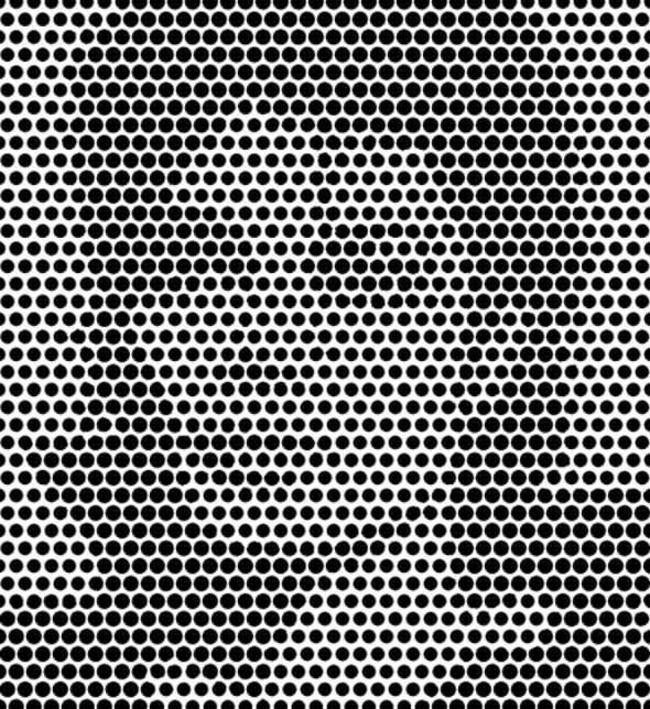
Stare at this lady’s nose for 10 seconds, then blink rapidly while looking at a light surface. Her face will appear in full color.

These cars look like they’re different sizes…

but in reality they’re all the same.
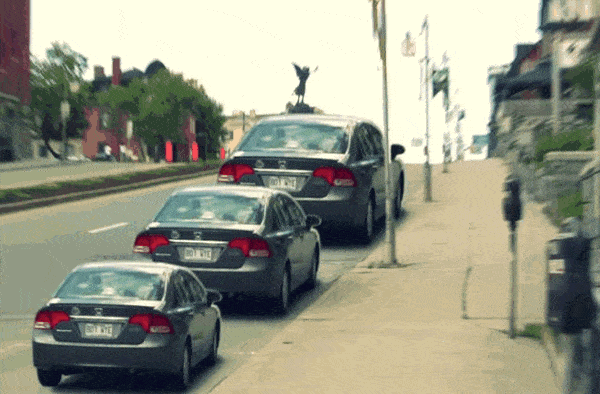
These dots seem to change color and orbit the center. But focus your eyes on a single dot – there’s no rotating or color change at all.
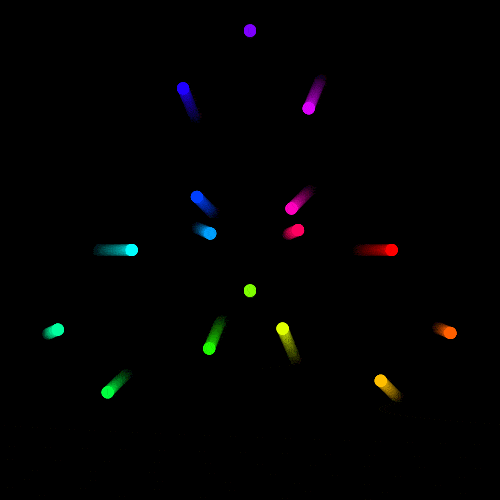
Similarly, stare at the cross in the center and watch the blank spot.

This park in Paris looks like it has a giant 3D globe…
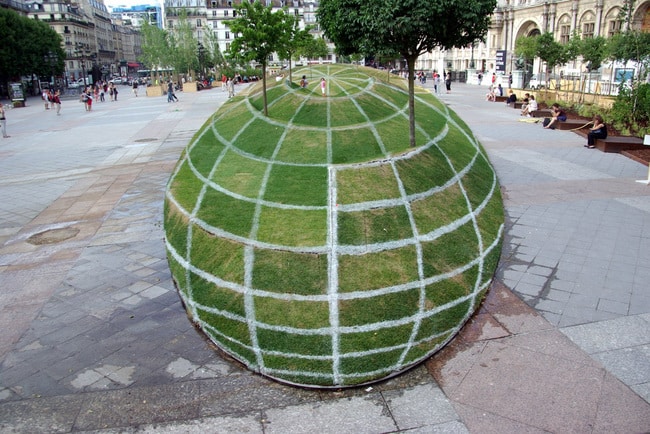
But it’s actually completely flat.
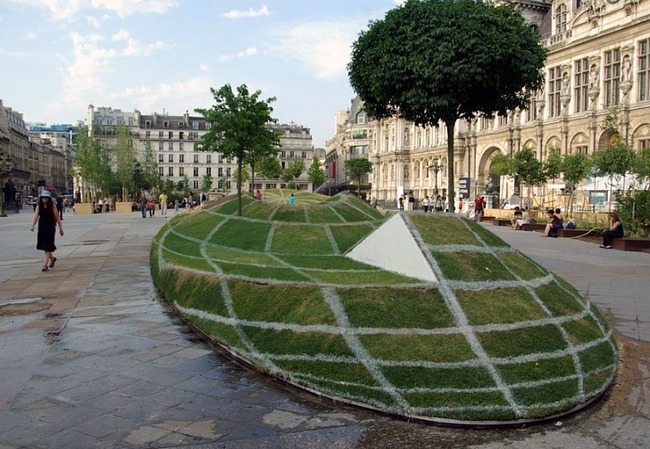
Which orange circle looks bigger?
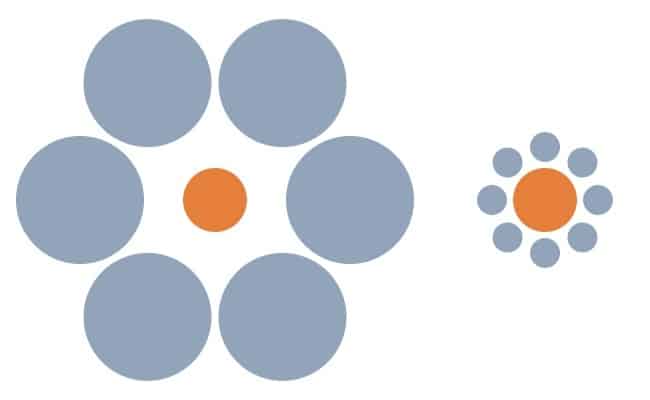
Surprisingly, they’re the same size.

The Ebbinghaus illusion exploits our perception of relative size. When an object is surrounded by larger objects, it seems far smaller than it actually is.
Stare at the yellow dot. Then, move your head closer to the screen and the pink rings will rotate.
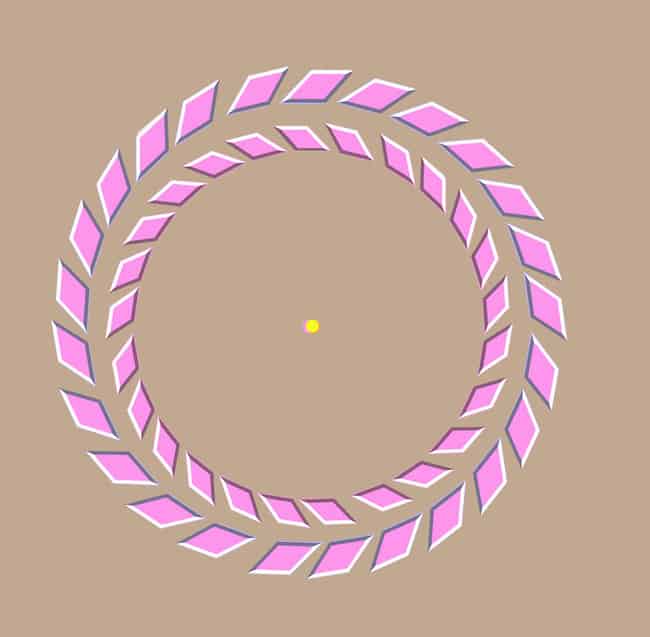
The Pinna-Brelstaff illusion occurs because of flaws in peripheral vision.
You won’t believe it, but the squares marked ‘A’ and ‘B’ are actually the exact same shade of grey.

This replica proves it…
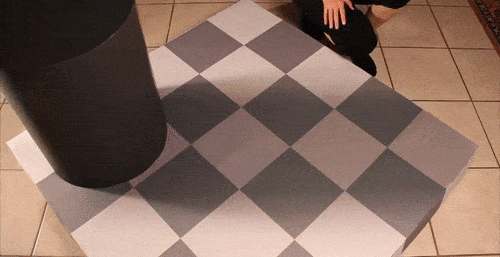
Our brains automatically adjusts color based on surrounding shadows. Since B is in the shade of the green cylinder, but is still the same color as A, the brain believes that it’s a lighter shade of grey.
Look at this swirling for 30 seconds and then look at the Inception photo below.
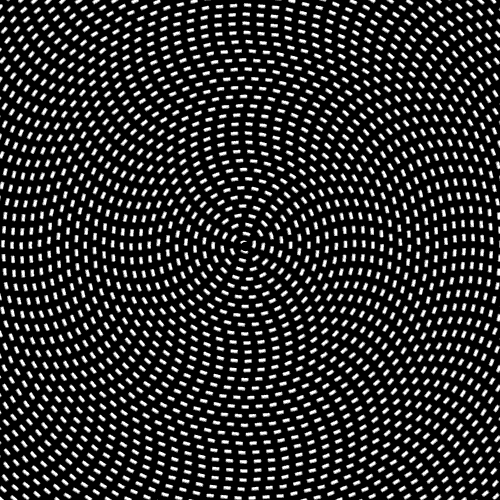
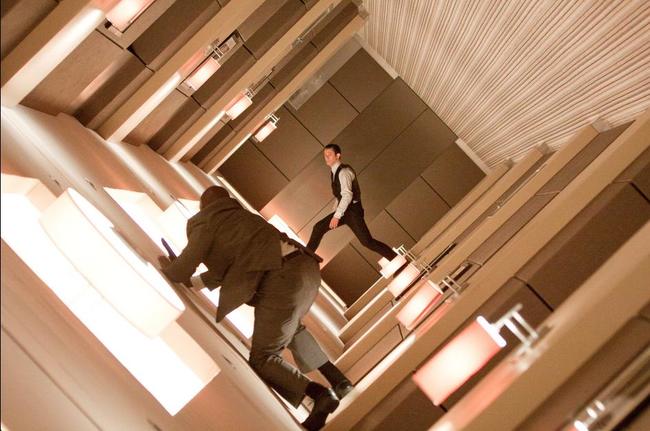
Staring at the swirling gif makes your eyes fatigued, so the non-moving images come to life as they try to regain composure.
The “Ames Room” illusion messes with our depth perception and is created by slanting the back wall of the room towards the camera and the ceiling downwards.

These yellow and blue blocks appear to move one after the other, right?
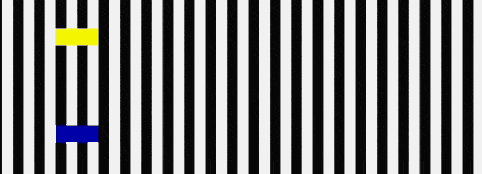
When the black bars are removed, you’ll see that they’re always parallel and that the black bars are distorting your brain’s perception of movement.
Slowly move your head towards image and the light in the middle will get brighter. Move your head away and the light will become weaker.
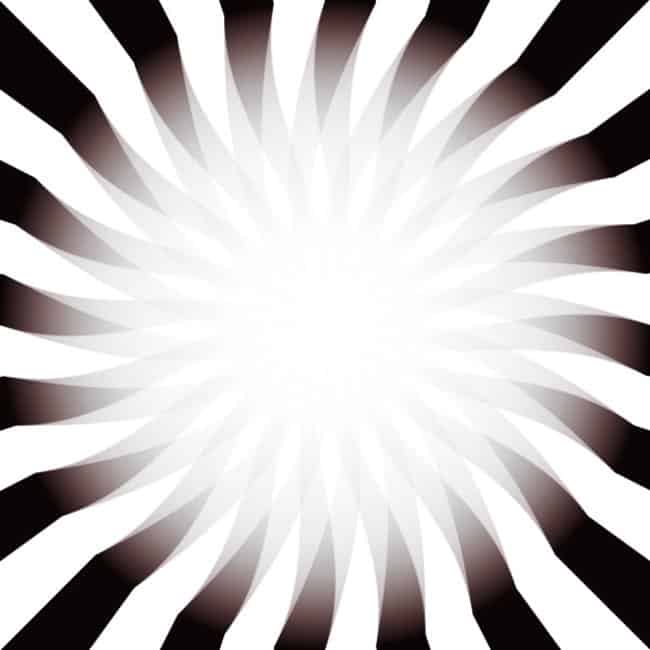
This is the dynamic luminance-gradient effect by Alan Stubbs from the University of Maine.
Stare at the center of the colored version, then wait for it to change to black and white.

Instead of turning black and white, your brain fills in the color it thinks you should be seeing, based on the orange and blue photo. Blink and you’ll be back to black and white.
All the dots on this image are white, but some appear black.
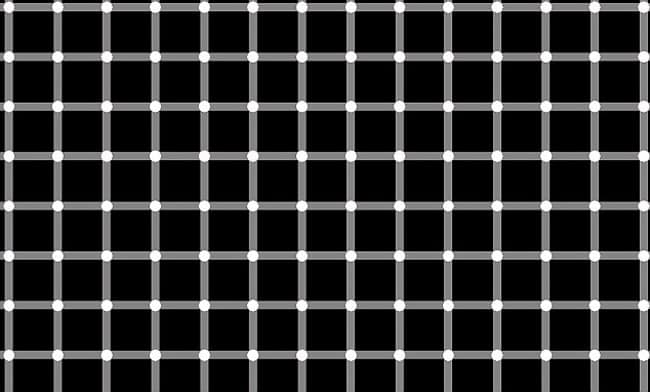
No matter how hard you try, you won’t be able to look directly at the black dots that appear in the circles. Why this illusion works is still a mystery.
By manipulating the human brain and eyes, Brusspup is able to create amazing animations with nothing but a black card.
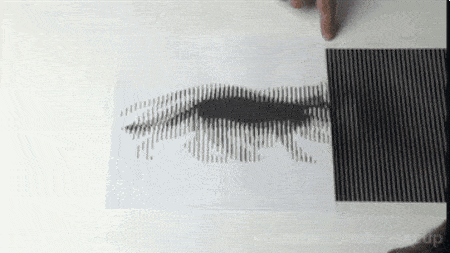
The dinosaurs’ eyes follow you wherever you go…

The “hollow face illusion” works because our brains perceive objects differently when we recognize them as faces. Although the right eye of the dinosaurs get farther as you move, you brain believes the distance is closer than it really is.
Akiyoshi Kitaoka uses geometrical shapes, brightness and color to create motion illusions. These images are not animated, but the human brain makes them appear so.
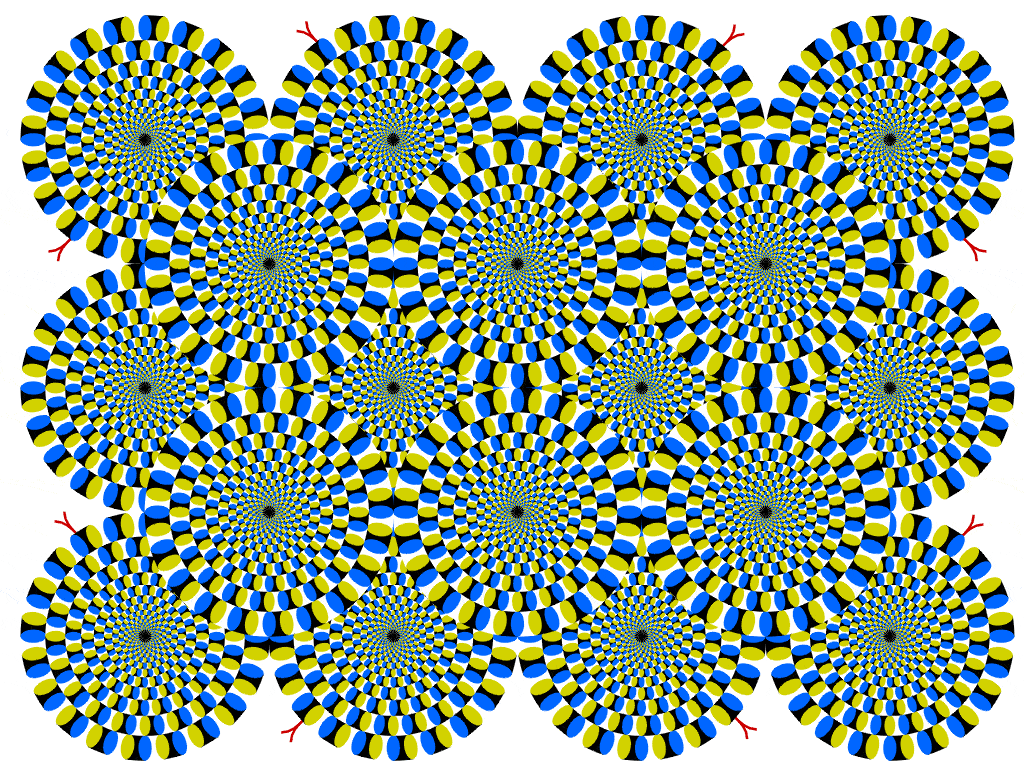
Using similar techniques, Randolph is able to create similar, more psychedelic illusions.
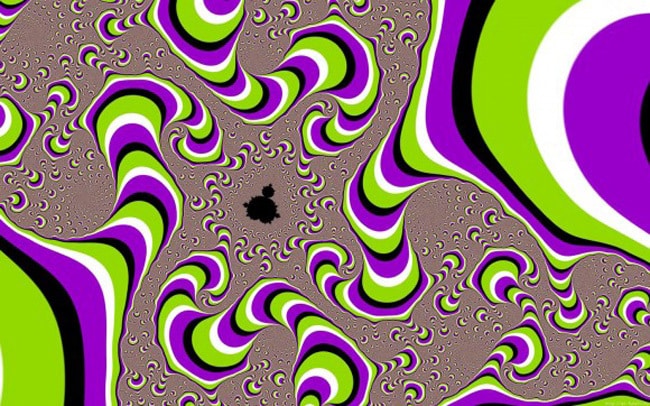

By layering multiple images on top of each other, photographers are able to create amazing two faced portraits.
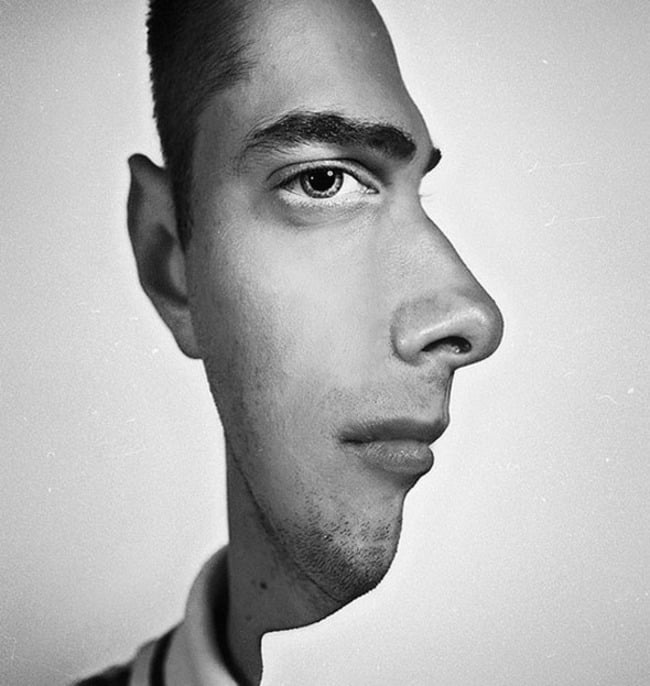
Which way is this train moving? Look long enough or blink and your brain will change the direction.

This is part of the ‘wagon-wheel effect. Closing your eyes for a second then opening them or looking in the direction you want the train to travel, should allow you to switch directions on command. The same goes for this wheel…
Is the middle dancer spinning clockwise or counterclockwise? The answer is both.

By staring at either the left or right dancer, you can change the direction the middle dancer spins.
Using clever design, artists like Ibride are able to create 3D art that look impossible.
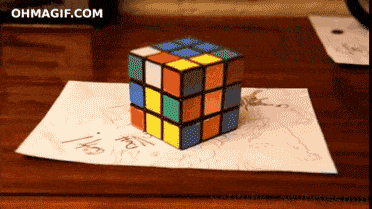
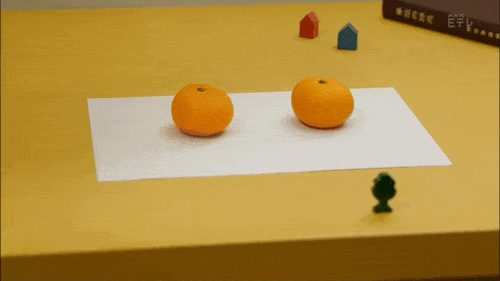
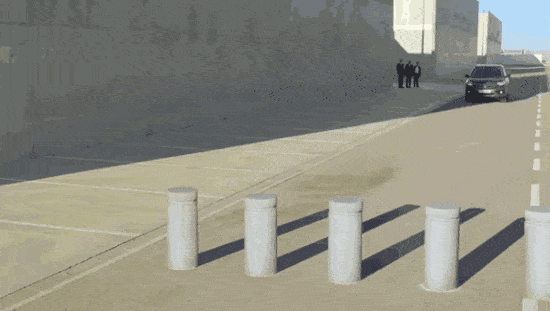
Stare at the blinking green dot for a few seconds, and see what happens to the yellow dots…
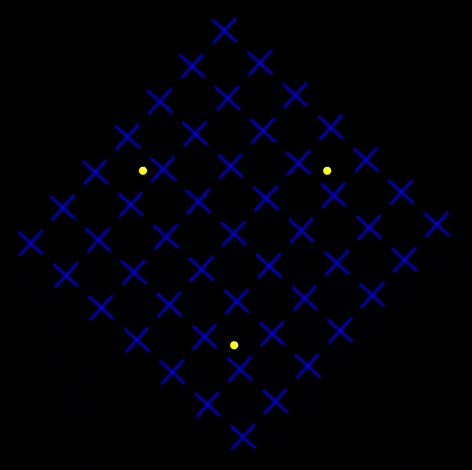
Hard to believe but the yellow dots never actually disappear. Still images are quick to fall from our awareness, especially when they’re surrounded by constantly changing imagery.
This looks like a face mask, but look closer…

It’s actually an image of two people kissing – not a single person’s face.
At first, they look like 3 attractive women…

But flip the image upside down, and you’ll see a very different picture.
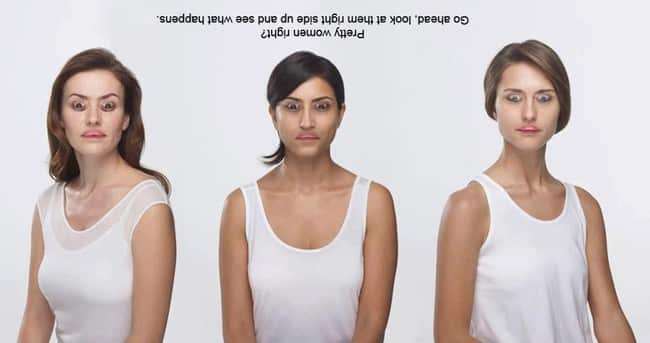
There are specific parts of your brain dedicated to face perception. But, we rarely encounter upside-down faces, so, when we do, it’s very difficult to spot any distortion.
The photograph of the Leaning Tower of Pisa on the right appears to lean more to the right. In reality, they’re identical photographs and the towers are parallel.
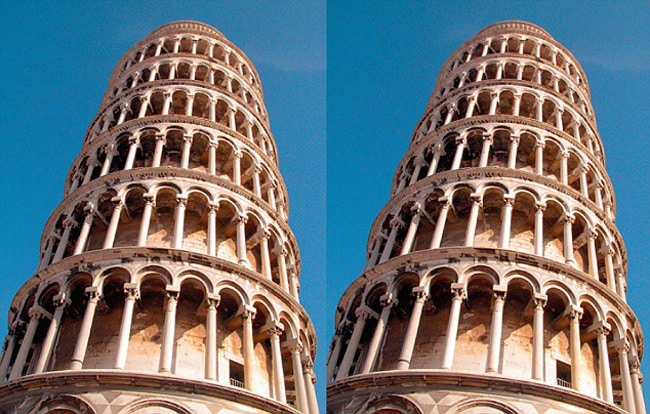
If two towers are parallel, then from a ground perspective they’d eventually converge into one another. So, when your eyes and brain see two towers that are parallel, they assume that they must be moving apart as they rise into the air and create the resulting illusion.
These horizontal lines appear to be sloping, but look long enough, and you’ll see that they’re parallel to one another.

Initially, it’s difficult to see the grey line between white and black tiles, meaning that the brain fills in the grey as either black or white, creating the illusion that the lines are sloped.
These overlapping circles are actually perfectly round and don’t touch at all – can you see past the illusion?


The water in Flathead Lake is so clear that it appears very shallow. Can you believe it’s actually 370 feet deep?

This is a simple illusion, but very cool nonetheless.
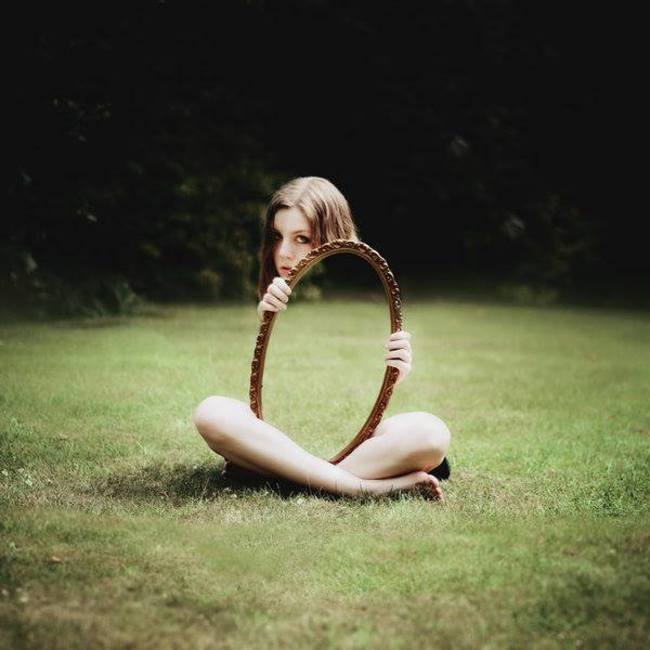
This 3D painted room seems to contain a massive drop. Only the brave dare walk on it.

Cover the sides of the hallway with your hands and the animation speeds down, cover the middle and the animation speeds up.
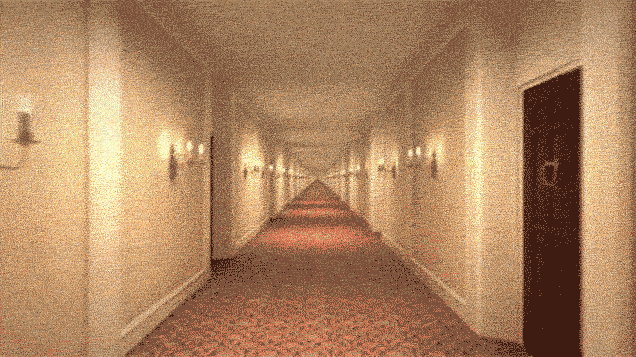
via Distractify
